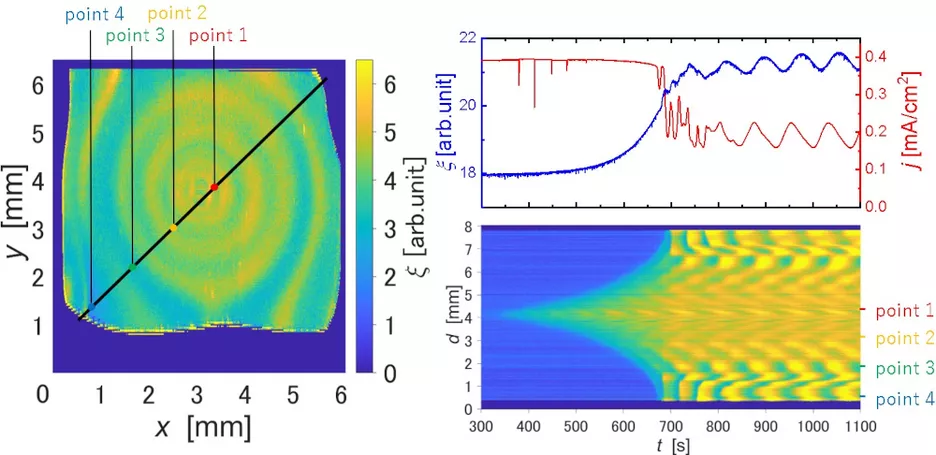

Yukiteru Murakami
Associate Professorship of Technical Physics
Controlling patterns with a spatial light modulator during Si electrodissolution
Synchronization denotes an adjustment of rhythms of oscillators due to their weak interaction, in other words, their mutual coupling. The significance of studying synchronous phenomena lies in its universality. By extracting the essential structure of a synchronous network common to different systems, crucial discoveries applicable in various fields can be expected.
A network model that has been extensively studied recently is called adaptive network. Adaptive networks consist of a number of nodes that are connected by links which change in time. This network adaptation is believed to play an important role in numerous applications ranging from neural information processing, ecology, and epidemiology to communication networks. However, up to now the realization of adaptive networks has been mainly limited to mathematical models.
In our oscillatory silicon dissolution system, the adaptive coupling has been speculated to result from a nonlinear and non-local coupling which can be traced back to the concerted action of the electrostatic potential within the silicon and transport of valence band holes due to a gradient in their electrochemical potential. Individual oscillating spots on the silicon surface created by a heterogeneous illumination can then serve in further studies as discrete oscillators which are coupled through the electric potential and the valence holes.
The goal of this study is, on the one hand, to better understand the nature of adaptive coupling in the oscillatory silicon system and, on the other hand, to establish a prototypical experimental system that will provide insight into the types of dynamic states that can arise from adaptive coupling.

